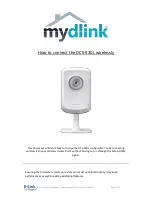
contrast. Which you prefer is very much a matter of personal taste.
Colour Negative Film
On processing, this produces a colour negative which shows a negative image of the subject in its complementary colours, e.g, blue
appears yellow. red appears blue-green and so on. These colours may sometimes be hidden under an overall orange or reddish tint.
The main purpose of the colour negative is the production of colour prints on paper. The quality is generally higher than that obtained
from a positive transparency.
From the colour negative you can make.
(a) any number of colour prints in varying sizes,
(b) direct black-and-white prints or enlargements, in the same way as from a black-and-white negative,
(c) positive colour transparencies for viewing or projection.
Colour negative films are mostly suitable for exposure by any type of light, e.g. daylight, flash or photofloods. The necessary
adjustment of the colour rendering is carried out during the printing stage. Manufacturers sometimes recommend conversion filters
even with colour negative films. These mainly serve to simplify the subsequent correction heeded in printing.
Colour Film Speeds
The majority of colour films, reversal and negative, are rated between 25 and 64 ASA or 15 to 19 DIN, corresponding to a slow to
medium speed for black-and-white material. A few films go up to 160 ASA or more for poor light conditions.
As with black-and-white films the slower types tend to yield improved image detail, especially with negative colour film, while the
fastest emulsions may show slightly reduced colour saturation and image sharpness.
The Choice of Colour Film
Making your choice between colour reversal or negative film (in spite of the various uses that can be made of either type of material)
remains an individual question.
First there is the way you want to see the result, as a colour print or as a colour transparency. The print has no doubt much to
commend itself. It is easily shown, stored and carried about. The transparency calls for the aid of a viewer or projector.
Next, the cost of a colour print is about three times that of the transparency. This may at times be mitigated by the fact that from
unsuitable negatives no colour prints need or can be made. The transparency user, however, has additional outlay in the form of a
viewer or projector with screen (in most cases both).
A final point to consider is the quality. The transparency will record each colour and its brilliance in full. Held to the light or projected
on a screen, the brightness range, which may be 100 : 1, is fully or almost fully retained. It shows colours brilliant with great depth
and realism. The colour print can at its best only reflect four-fifths of the light failing on it and even the darkest tones reflect about
one-twentieth to one-tenth, so that the full range is no more than 16 : 1. While the colour print is, by necessity, duller than the
transparency. it s only fair to say that the eye soon adjusts itself to the reduced brightness range, and subjects without great
contrasts will be very satisfying.
From the point of view of convenience, reversal film has the advantage that it directly gives finished colour pictures of high quality and
is still capable of producing colour prints.
For the maximum versatility and control in print making, however negative film is superior.
Filters for Black-and-White Film
By its nature, a black-and-white film can only translate colour values of the subject into tones of lighter or darker grey. Mostly these
correspond fairly closely to the brightness of the colours, but do not, of course, differentiate between them. In certain cases the
difference between the brightness of two colours may be so slight that both record in almost the same tone of grey.
There a filter helps by modifying the depth of one or the other colour, and so making it show up lighter or darker than it would
normally.
The commonest example is the blue sky in a landscape, with white clouds. The blue is so brilliant (and the film is often excessively
sensitive to it) that the clouds do not show up against it. By putting a yellow filter in front of the camera lens we can subdue or
"holdback" the blue, so making it record darker in the final print. We can even go further and over-emphasize the effect progressively
with an orange or red fitter; these darken the blue so much that the sky looks almost black for a really dramatic effect.
The same considerations hold for other filter effects. For instance, the film renders a red rose in the same tone or grey as the green
leaves of the rose bush. With the colour contrast gone, the rose disappears in its surroundings. A green filter makes the rose darker
and the leaves lighter; conversely, a red fitter will show up the rose as light against dark foliage. Scientifically, both filters falsify the
www.mr-alvandi.com
Содержание 1000 F
Страница 18: ...WILD LIFE www mr alvandi com ...
Страница 52: ...THE CUT FILM ADAPTOR www mr alvandi com ...
Страница 54: ...Daylight Exposure Values www mr alvandi com ...
Страница 55: ...Filters for Black and White Film www mr alvandi com ...
Страница 57: ...Colour Temperatures and Light Sources Light Balancing Filter Data Filter Equivalents www mr alvandi com ...
Страница 59: ...Close Ranges with 50 60 mm Distagon and Planar 80 mm www mr alvandi com ...
Страница 60: ...Close Ranges with 120mm S PLANAR 150 200 mm SONNAR www mr alvandi com ...
Страница 61: ...Focusing Ranges with the Extension Bellows Shutter Speeds to Arrest Movement www mr alvandi com ...
Страница 62: ...Conversion of Film Speed Systems Colour Films www mr alvandi com ...
Страница 63: ...Black and White Films www mr alvandi com ...
Страница 64: ...www mr alvandi com ...
















































